WordPress is an excellent option for those looking to start an e-commerce site, a personal blog, a portfolio, or even a company website. Or even if you are planning a combination of two. However, you are probably not familiar with the term “WordPress Multisite”.
A WordPress multisite, as the name suggests, is your one-stop solution for running multiple WordPress websites. As we move forward, this guide will talk about the benefits, best use cases, installation processes, and more!
Web hosting control panel, such as CyberPanel offers support WordPress multisite.
WordPress Multisite 101
WordPress multisite is a feature for managing multiple websites from a singular WordPress installation on your server. As multisite suggests, you can run a number of sites from one dashboard.
It is a configuration that shares core files, databases and network administrators across multiple sites, managed by a centralized dashboard. There are multiple benefits of using multisite instead of a singular site network. The first reason being; resources. Shared resources take less server space, which is crucial for businesses. Furthermore, it is more manageable due to shared core files.
Key Features of WordPress Multisite
Let’s talk about some core components of WordPress multisite to figure out why it is better than a single site.
Get exclusive access to all things tech-savvy, and be the first to receive
the latest updates directly in your inbox.
- Centralized Management
WordPress multisite allows you to control a number of websites from a shared dashboard, which simplifies maintenance and updates.
- Shared Resources
Themes and plug-ins installed once, can be used across multiple websites, saving server space and reducing redundancy.
- Flexible Domain structure
WordPress multisites supports subdomains or subdirectories based on your requirements. For example, abc.com, can have a blog site, blog.abc.com, or abc.com/blog.
- Scalability
WordPress multisite is an ideal solution for startup companies who are expanding at a steady rate or those who have multiple franchises or clients.
- Admin role and permissions
Admin can assign roles and permissions at both the networks simultaneously to maintain security and control. By default, a website has five major roles: administrator, editor, author, contributor, and subscriber.
Benefits of Using WordPress Multisite for Your Website
As you can guess, WordPress multisite offers several key benefits for managing multiple websites under one centralized platform.
- Cost Efficiency
One of the primary benefits of using WordPress multisite is cost efficiency. Since themes and plug-ins installed once can be used across all sites in the network, saving both money and time. You can also avoid paying for separate hosting or licenses for each website. Shared resources as such can greatly impact the overall costs.
- Consistent Branding
With WordPress multisite, consistent branding is super easy to maintain across the network. Using the same themes and plugins ensures that branding remains uniform, all the while maintaining site-specific customizations. This is useful for businesses with multiple locations or clients who require individual site management.
- Multilingual Support
For global clientele, multilingual support is another added advantage. WordPress multisite supports multiple languages across different websites, allowing the admin to cater to a diverse set of audiences.
- Updates and Maintenance
WordPress multisites makes updates and maintenance a breeze. You can do basic system maintenance once across all networks, saving time and reducing the risk of outdated software on individual sites. This streamlined approach helps businesses stay on top of updates.

Is WordPress Multisite Right for You? – Use Cases
Here are a few use cases with examples for better understanding.
- Managing multiple websites as a digital marketing agency with several clients.
- Businesses or companies with many sub domains, for example educational institutes with department specific sites.
- Business with multiple locations, for example a restaurant chain that has different branches so each website has its local content.
- Sites with subscription based content like a fitness website.
- Multi-brand companies with different services, like web development, social media, Google ads management, SEO, content and more.
- Content publishers with niche blogs like fashion, sports, tech, and more. Each blog can post unique content but share the same system.
When to use WordPress Multisite?
When you’re building a network of sites with identical functionality, WordPress Multisite is the way to go. Plugins, custom programs, or particular server configurations should have been used to add equivalent capabilities. It works best when utilized on a small number of themes that have been specially curated for the network’s needs, rather than enabling users to upload their own unique themes. Multisite isn’t a suitable fit for you if your network has a lot of diverse WordPress sites (in terms of plugins, themes, and customization).
Multisite WordPress vs Single Site WordPress
| Feature/Aspect | WordPress Multisite | WordPress Single Site |
| Purpose | Manage multiple sites from a single WordPress installation. | Manage a single site with independent settings. |
| Administration | Centralized control via a Network Admin dashboard for all sites. | Each site has its own independent admin dashboard. |
| Database Structure | Shares a single database with unique tables for each site (e.g., wp_2_posts, wp_3_posts). | Uses one set of database tables (e.g., wp_posts). |
| Themes and Plugins | Installed once and shared across all sites in the network. Individual sites can activate them. | Installed and activated independently for the single site. |
| User Management | Users can be shared across all sites with network-wide roles. | Users are specific to the individual site. |
| Resource Usage | May consume more resources as multiple sites run on the same installation. | Typically uses fewer resources for one site. |
| Customizability | Limited to the network’s global settings; individual sites inherit certain configurations. | Fully customizable without restrictions from a network. |
| Updates | Core, theme, and plugin updates are done once for the entire network. | Updates are performed for the single site only. |
| Domain/Subdomain Setup | Supports subdomains (site1.example.com), subdirectories (example.com/site1), or custom domains. | Limited to a single domain unless custom domain mapping is used. |
| Scalability | Ideal for scaling multiple related sites under one network. | Suitable for standalone or independent websites. |
| Backup and Restoration | Complex, as all sites share a single database and files. Requires network-level backups. | Straightforward, as it involves only one site’s data. |
| Security Risks | A vulnerability in one site can potentially affect the entire network. | A security issue affects only the single site. |
| Use Cases | Best for networks of blogs, businesses with multiple locations, franchises, or educational institutions. | Suitable for standalone blogs, small businesses, or personal sites. |
| Performance | Depending on the network size; larger networks may need optimization. | Typically faster due to reduced overhead. |
| Setup Complexity | More complex to set up and configure. | Easier to set up, especially for beginners. |
How Can You Create Multisite In WordPress?
You can use CyberPanel + Cloudflare to create WordPress Multisite, we will first add wild-card DNS record in Cloudflare and we will then deploy WordPress Multisite using CyberPanel – a web hosting control panel.
Step 1: Configure Wild-card records in Cloudflare
Go to CloudFlare and select your domain
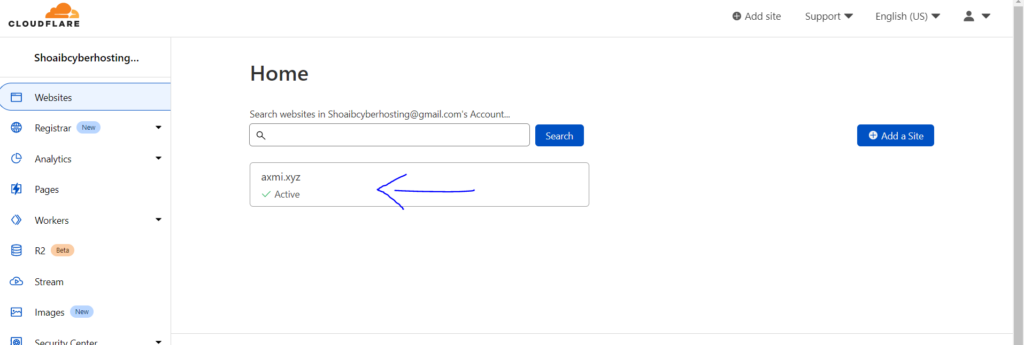
Click on DNS from the left hand side menu

Enter A record with (*) in namespace

Step 2: Deploy WordPress Site
You first need to deploy a normal WordPress site using CyberPanel, once that is done, you can then create child domains that will point to document root of this main site and then you can add them in your WordPress network.
Go to the CyberPanel dashboard
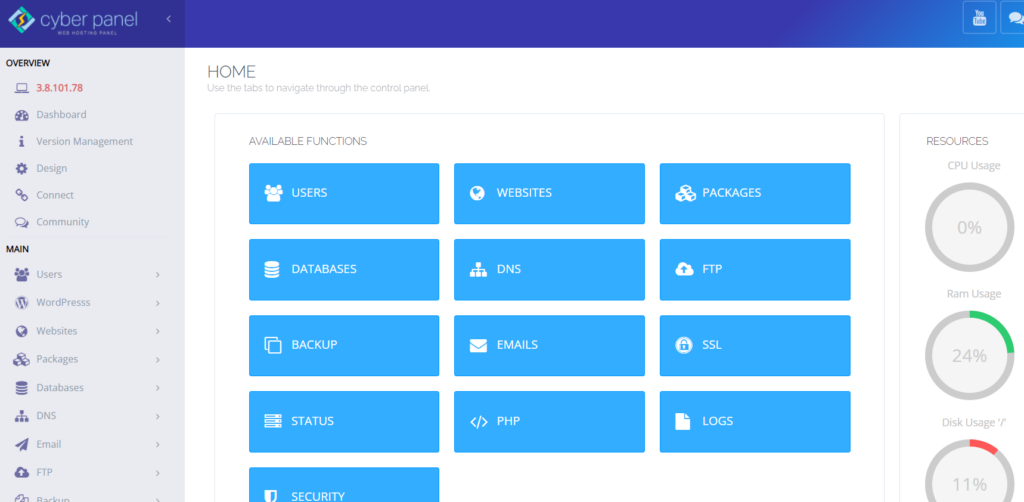
Click on WordPress -> Deploy WordPress from the left hand side menu

Enter required info

Click on “Create Website”

Step 3: Configure WordPress Multisite
Go to your WordPress dashboard and deactivate all active plugins, on CyberPanel default installation there is only one-active plugin called “LiteSpeed Cache” disable the plugin so that we can configure WordPress Multisite.

Configure wp-config.php to allow WordPress Multisite
Go to CyberPanel dashboard

Click on Websites -> List Websites from the left hand side menu

Click on File Manager of your site.

Open public_html

Enter the following code in wp_config.php
define('WP_ALLOW_MULTISITE',true);and click save

Configure Multisite inside WordPress
Open your WordPress dashboard
Click on Tools -> Network setup from the left-hand side menu

Select the required options and save. You can select sub-domains or sub-directories

Configuration
After installation you will be given two pieces of code. In your File Manager in CyberPanel, copy the code and paste them in wp-config.php and .htaccess respectively.


Create new sites on network
you will need to login to WP dashboard again

Go to WP dashboard

Click on “my sites” from the top. Click on network admin -> dashboard

Click on sites -> add new from the left hand side menu

Enter the required information

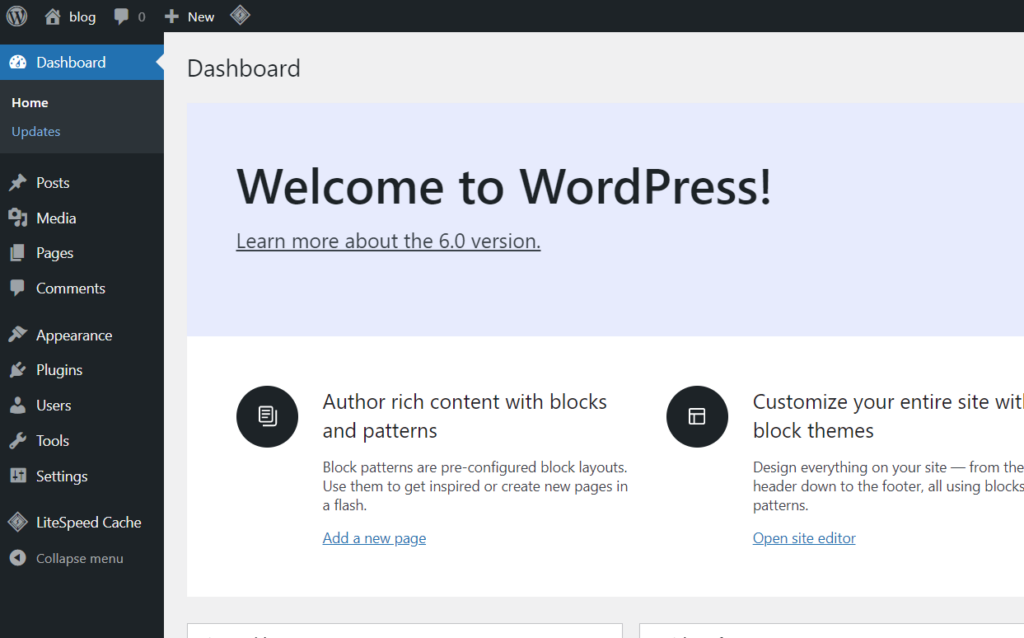
Create Child domains
Once WordPress is deployed
Go to CyberPanel dashboard
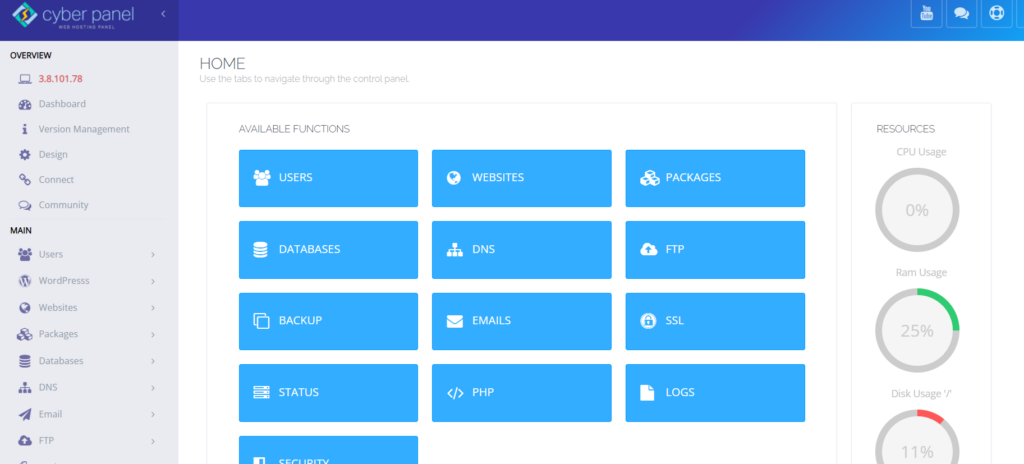
Click on WordPress -> List WordPress from the left hand side menu

Click on WP site

Click on manage
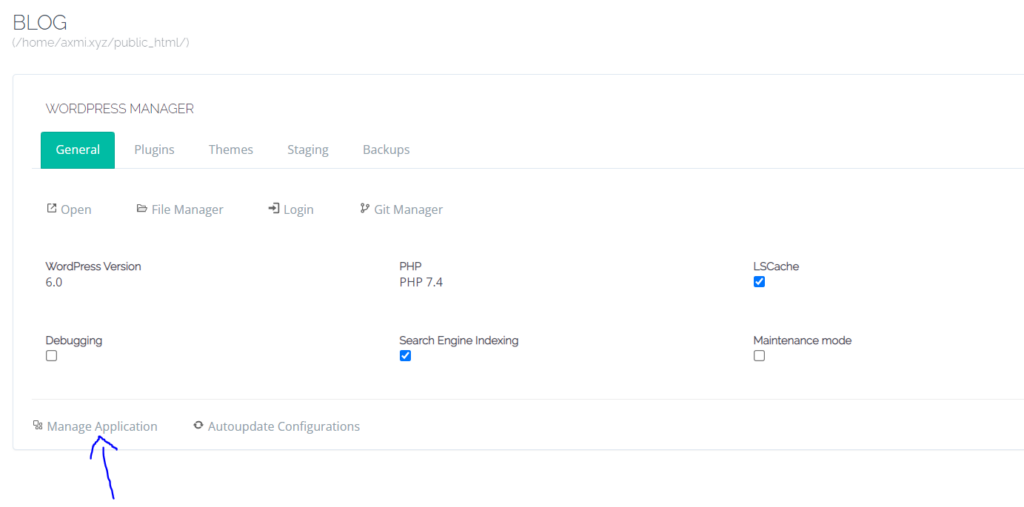
Click on “Add Domain”

Enter required info (make sure to enter “public_html” in path)

Click on Create Domain!
Final Words!
WordPress multisite is a crucial tool for managing multiple websites via a single server efficiently. If you are a growing business, a digital agency, an educational institute, or a similar entity, WordPress multisite is a godsend for you!
Frequently Asked Questions
1. How do I troubleshoot common Multisite issues?
Common issues include login redirects, domain mapping errors, and plugin conflicts. Always check your wp-config.php and .htaccess configurations, and ensure themes/plugins are compatible with Multisite.
2. Is WordPress Multisite scalable?
Yes, WordPress Multisite is designed to scale. You can manage hundreds of sites within a single network, making it suitable for growing businesses or large organizations.
3. Can I use Multisite with both subdomains and subdirectories?
Yes, WordPress Multisite supports both configurations:
– Subdomains: e.g., blog.example.com
– Subdirectories: e.g., example.com/blog
Your choice depends on your hosting setup and project requirements.



